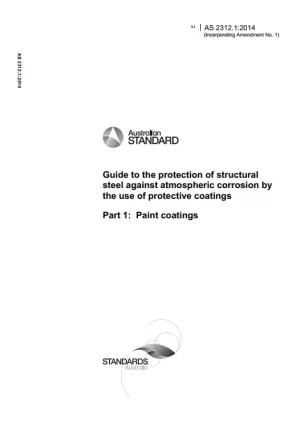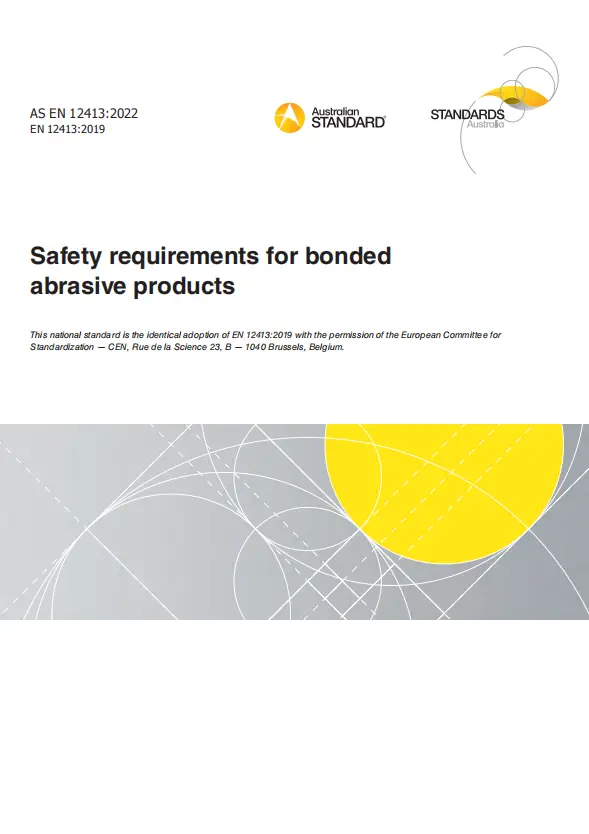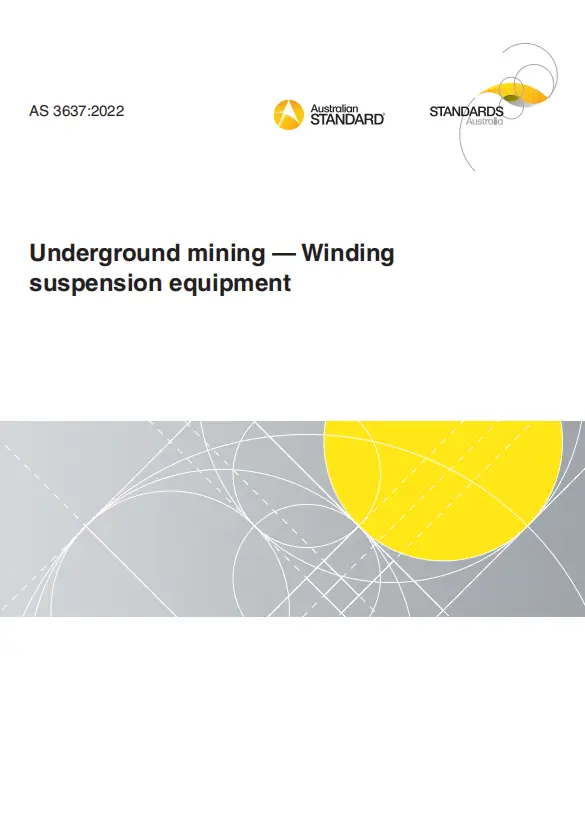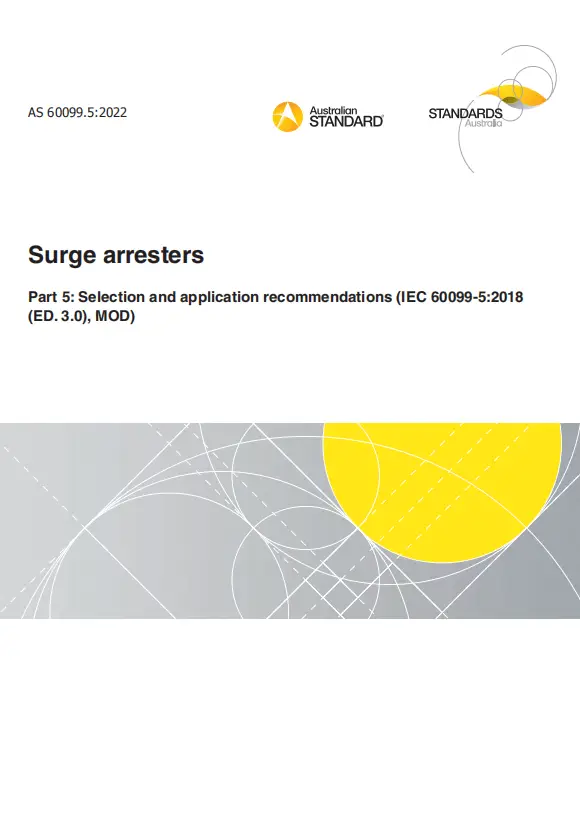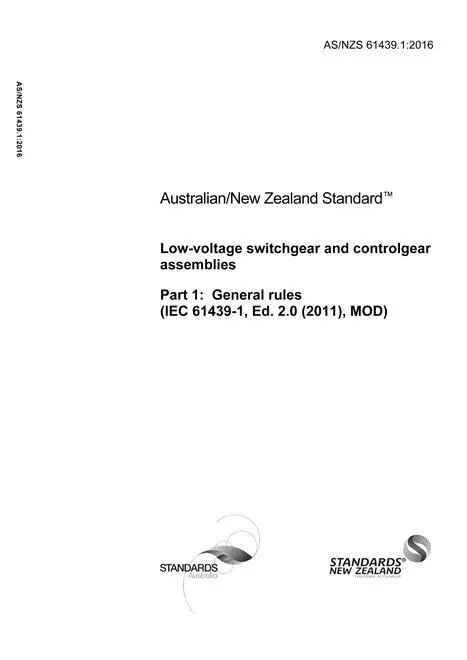AS 3600, 5th, 2018 – Concrete structures
AS 3600 sets out minimum requirements for the design and construction of concrete building structures and members that contain reinforcing steel or tendons, or both. It also sets out minimum requirements for plain concrete pedestals and footings.
NOTES:
1: The general principles of concrete design and construction and the criteria embodied in this Standard may be appropriate for concrete structures other than buildings, members not specifically mentioned herein and to materials outside the limits given in Clause 1.1.2.
2: It is intended that the design of a structure or member to which this Standard applies be carried out by, or under the supervision of, a suitably experienced and competent person.
3: For guidance on the design of maritime structures refer to AS 4997.
4: If alternate materials and methods to those prescribed in this Standard are to be used, they would need to be considered as part of the development of a Performance Solution to demonstrate compliance with the relevant Performance Requirements of the National Construction Code (NCC) and be accepted by the relevant building authority.
AS 3600 is not intended to apply to the design of mass concrete structures.
General Product Information:
| Committee |
BD-002 |
| Purchase Note |
All current amendments available at time of purchase are included with the purchase of this document |
| Document Type |
PDF |
| ISBN |
978 1 76072 146 6 |
| Pages |
272 |
| Document Language |
English |
| Publisher |
Standards Australia |
| Status |
Current |
Preview
Table of cotents
Preface
1 Scope and general
1.1 Scope and application
1.1.1 Scope
1.1.2 Application
1.1.3 Exclusions
1.2 Normative references
1.3 Existing structures
1.4 Documentation
1.5 Construction
1.6 Definitions
1.7 Notation
2 Design procedures, actions and loads
2.1 Design procedures
2.1.1 Design for strength and serviceability
2.1.2 Design for earthquake actions
2.1.3 Design for robustness and structural integrity
2.1.4 Design for durability and fire resistance
2.1.5 Design for fatigue
2.1.6 Material properties
2.2 Design for strength
2.2.1 General
2.2.2 Strength check procedure for use with linear elastic methods of analysis, with simplified analysis methods and for statically determinate structures
2.2.3 Strength check procedure for use with linear elastic stress analysis
2.2.4 Strength check procedure for use with strut-and-tie analysis
2.2.5 Strength check procedure for use with nonlinear analysis of framed structures
2.2.6 Strength check procedure for use with nonlinear stress analysis
2.3 Design for serviceability
2.3.1 General
2.3.2 Deflection
2.3.3 Cracking
2.3.3.1 General
2.3.3.2 Control of cracking
2.3.4 Vibration
2.4 Design for fatigue
2.5 Actions and combinations of actions
2.5.1 Actions and loads
2.5.2 Combinations of actions and loads
2.5.2.1 General
2.5.2.2 Additional combinations for prestressed members
2.5.2.3 Actions and load combinations for fatigue
2.5.3 Construction effects
2.5.4 Arrangements of vertical loads on continuous beams, frames and floor systems
3 Design properties of materials
3.1 Properties of concrete
3.1.1 Strength
3.1.1.1 Characteristic compressive strengths
3.1.1.2 Mean in situ compressive strength
3.1.1.3 Tensile strength
3.1.2 Modulus of elasticity
3.1.3 Density
3.1.4 Stress-strain curves
3.1.5 Poisson’s ratio
3.1.6 Coefficient of thermal expansion
3.1.7 Shrinkage
3.1.7.1 Calculation of design shrinkage strain
3.1.7.2 Design shrinkage strain
3.1.8 Creep
3.1.8.1 General
3.1.8.2 Basic creep coefficient
3.1.8.3 Design creep coefficient
3.2 Properties of reinforcement
3.2.1 Strength and ductility
3.2.2 Modulus of elasticity
3.2.3 Stress-strain curves
3.2.4 Coefficient of thermal expansion
3.3 Properties of tendons
3.3.1 Strength
3.3.2 Modulus of elasticity
3.3.3 Stress-strain curves
3.3.4 Relaxation of tendons
3.3.4.1 General
3.3.4.2 Basic relaxation
3.3.4.3 Design relaxation
3.4 Loss of prestress in tendons
3.4.1 General
3.4.2 Immediate loss of prestress
3.4.2.1 General
3.4.2.2 Loss of prestress due to curing conditions
3.4.2.3 Loss of prestress due to elastic deformation of concrete
3.4.2.4 Loss of prestress due to friction
3.4.2.5 Loss of prestress during anchoring
3.4.2.6 Loss of prestress due to other considerations
3.4.3 Time-dependent losses of prestress
3.4.3.1 General
3.4.3.2 Loss of prestress due to shrinkage of the concrete
3.4.3.3 Loss of prestress due to creep of the concrete
3.4.3.4 Loss of prestress due to tendon relaxation
3.4.3.5 Loss of prestress due to other considerations
3.5 Material properties for nonlinear structural analysis
4 Design for durability
4.1 General
4.2 Method of design for durability
4.3 Exposure classification
4.3.1 General
4.3.2 Concession for exterior exposure of a single surface
4.4 Requirements for concrete for exposure classifications A1, A2, B1, B2, C1 and C2
4.5 Requirements for concrete for exposure classification U
4.6 Abrasion
4.7 Freezing and thawing
4.8 Aggressive soils
4.8.1 Sulfate and acid sulfate soils
4.8.2 Saline soils
4.9 Restrictions on chemical content in concrete
4.10 Requirements for cover to reinforcing steel and tendons
4.10.1 General
4.10.2 Cover for concrete placement
4.10.3 Cover for corrosion protection
4.10.3.1 General
4.10.3.2 Required cover where standard formwork and compaction are used
4.10.3.3 Required cover where repetitive procedures or intense compaction are used in rigid formwork
4.10.3.4 Required cover where self-compacting concrete is used
4.10.3.5 Cast against ground
4.10.3.6 Structural members manufactured by spinning or rolling
4.10.3.7 Embedded items cover
5 Design for fire resistance
5.1 Scope
5.2 Definitions
5.3 Design performance criteria
5.3.1 General performance criteria
5.3.2 General rules for the interpretation of tabulated data and figures
5.3.3 Increase in axis distance for prestressing tendons
5.3.4 Dimensional limitations to achieve fire-rating
5.3.5 Joints
5.3.6 The effect of chases
5.3.7 Increasing FRPs by the addition of insulating materials
5.4 Fire resistance periods (FRPs) for beams
5.4.1 Structural adequacy for beams incorporated in roof or floor systems
5.4.2 Structural adequacy for beams exposed to fire on all sides
5.5 Fire resistance periods (FRPs) for slabs
5.5.1 Insulation for slabs
5.5.2 Structural adequacy for slabs
5.6 Fire resistance periods (FRPs) for columns
5.6.1 Insulation and integrity for columns
5.6.2 Structural adequacy for columns
5.6.3 Restricted tabular method to determine structural adequacy for columns
5.6.4 General tabular method to determine structural adequacy for columns
5.7 Fire resistance periods (FRPs) for walls
5.7.1 Insulation for walls
5.7.2 Structural adequacy for walls
5.7.3 Effective height limitations for walls
5.7.4 Other requirements for walls
5.7.4.1 Recesses for services in walls
5.7.4.2 Effect of chases on structural adequacy of walls
5.7.4.3 Effect of chases on integrity and insulation of walls
5.8 Increase of fire resistance periods (FRPs) by use of insulating materials
5.8.1 Increase of FRP by the addition of insulating materials
5.8.1.1 General
5.8.1.2 Acceptable forms of insulation
5.8.1.3 Thickness of insulating material
5.8.1.4 Reinforcement in sprayed or trowelled insulating materials
5.8.2 Increase of insulation period of slabs by application of toppings
6 Methods of structural analysis
6.1 General
6.1.1 Basis for structural analysis
6.1.2 Interpretation of the results of analysis
6.1.3 Methods of analysis
6.1.4 Geometrical properties
6.1.4.1 Column strip
6.1.4.2 Design strip
6.1.4.3 Middle strip
6.1.4.4 Span support
6.1.4.5 Transverse width
6.2 Linear elastic analysis
6.2.1 General
6.2.2 Span length
6.2.3 Critical sections for negative moments
6.2.4 Stiffness
6.2.4.1 General
6.2.4.2 Stiffness of lateral force resisting elements
6.2.5 Deflections
6.2.6 Secondary bending moments and shears resulting from prestress
6.2.7 Moment redistribution in reinforced and prestressed members for strength design
6.2.7.1 General requirements
6.2.7.2 Deemed-to-conform approach for reinforced and prestressed members
6.3 Elastic analysis of frames incorporating secondary bending moments
6.3.1 General
6.3.2 Analysis
6.4 Linear elastic stress analysis
6.4.1 General
6.4.2 Analysis
6.4.3 Sensitivity of analysis to input data and modelling parameters
6.5 Nonlinear frame analysis
6.5.1 General
6.5.2 Nonlinear material effects
6.5.3 Nonlinear geometric effects
6.5.4 Values of material properties
6.5.5 Sensitivity of analysis to input data and modelling parameters
6.6 Nonlinear stress analysis
6.6.1 General
6.6.2 Analysis
6.6.3 Nonlinear material and geometric effects
6.6.4 Values of material properties
6.6.5 Sensitivity of analysis to input data and modelling parameters
6.7 Plastic methods of analysis
6.7.1 General
6.7.2 Methods for beams and frames
6.7.3 Methods for slabs
6.7.3.1 Lower-bound method for slabs
6.7.3.2 Yield line method for slabs
6.8 Analysis using strut-and-tie models
6.8.1 General
6.8.2 Sensitivity of analysis to input data and modelling parameters
6.9 Idealized frame method of analysis
6.9.1 General
6.9.2 Idealized frames
6.9.3 Analysis for vertical loads
6.9.4 Analysis for horizontal loads
6.9.5 Idealized frame method for structures incorporating two-way slab systems
6.9.5.1 General
6.9.5.2 Effective width
6.9.5.3 Distribution of bending moments between column and middle strips
6.9.5.4 Torsional moments
6.9.5.5 Openings in slabs
6.10 Simplified methods of flexural analysis
6.10.1 General
6.10.2 Simplified method for reinforced continuous beams and one-way slabs
6.10.2.1 Application
6.10.2.2 Negative design moment
6.10.2.3 Positive design moment
6.10.2.4 Transverse design shear force
6.10.3 Simplified method for reinforced two-way slabs supported on four sides
6.10.3.1 General
6.10.3.2 Design bending moments
6.10.3.3 Torsional moment at exterior corners
6.10.3.4 Load allocation
6.10.4 Simplified method for reinforced two-way slab systems having multiple spans
6.10.4.1 General
6.10.4.2 Total static moment for a span
6.10.4.3 Design moments
6.10.4.4 Transverse distribution of the design bending moment
6.10.4.5 Moment transfer for shear in flat slabs
6.10.4.6 Shear forces in beam-and-slab construction
6.10.4.7 Openings in slabs
7 Strut-and-tie modelling
7.1 General
7.2 Concrete struts
7.2.1 Types of struts
7.2.2 Strut efficiency factor
7.2.3 Design strength of struts
7.2.4 Bursting reinforcement in bottle-shaped struts
7.3 Ties
7.3.1 Arrangement of ties
7.3.2 Design strength of ties
7.3.3 Anchorage of ties
7.4 Nodes
7.4.1 Types of nodes
7.4.2 Design strength of nodes
7.5 Analysis of strut-and-tie models
7.6 Design based on strut-and-tie modelling
7.6.1 Design for strength
7.6.2 Serviceability checks
8 Design of beams for strength and serviceability
8.1 Strength of beams in bending
8.1.1 General
8.1.2 Basis of strength calculations
8.1.3 Rectangular stress block
8.1.4 Dispersion angle of prestress and concentrated forces
8.1.5 Design strength in bending
8.1.6 Minimum strength requirements
8.1.6.1 General
8.1.6.2 Prestressed beams at transfer
8.1.7 Stress in reinforcement and bonded tendons at ultimate strength
8.1.8 Stress in tendons not yet bonded
8.1.9 Spacing of reinforcement and tendons
8.2 Strength of beams in shear
8.2.1 General
8.2.1.1 Combined flexure, torsion and shear
8.2.1.2 Consideration of torsion
8.2.1.3 Vertical component of prestress
8.2.1.4 Tapered members
8.2.1.5 Effective web width
8.2.1.6 Requirements for transverse shear reinforcement
8.2.1.7 Minimum transverse shear reinforcement
8.2.1.8 Design yield strength of tendons as transverse shear reinforcement
8.2.1.9 Effective shear depth
8.2.2 Design procedures
8.2.2.1 Flexural regions
8.2.2.2 Regions near discontinuities
8.2.2.3 Interface regions
8.2.2.4 Detailed analysis
8.2.3 Sectional design of a beam
8.2.3.1 Design strength of a beam in shear and torsion
8.2.3.2 Maximum transverse shear near a support
8.2.3.3 Shear and torsional strength limited by web crushing
8.2.4 Concrete contribution to shear strength (Vuc)
8.2.4.1 General
8.2.4.2 Determination of kv and θv (general method)
8.2.4.2.1 Equations
8.2.4.2.2 Determination of the longitudinal strain in concrete ε x for shear
8.2.4.2.3 Determination of ε x for combined shear and torsion
8.2.4.3 Determination of kv and θv for non-prestressed components (simplified method)
8.2.4.4 Secondary effects on Vuc
8.2.4.5 Reversal of loads
8.2.5 Transverse shear and torsion reinforcement contribution
8.2.5.1 General
8.2.5.2 Transverse reinforcement for shear
8.2.5.3 Transverse reinforcement for combined shear and torsion
8.2.5.4 Minimum torsional reinforcement
8.2.5.5 Torsional resistance
8.2.6 Hanging reinforcement
8.2.7 Additional longitudinal tension forces caused by shear and torsion
8.2.8 Proportioning longitudinal reinforcement
8.2.8.1 General
8.2.8.2 Flexural tension side
8.2.8.3 Flexural compression side
8.3 General details for beams
8.3.1 Detailing of flexural reinforcement and tendons
8.3.1.1 Distribution of reinforcement and integrity reinforcement
8.3.1.2 Continuation of negative moment reinforcement
8.3.1.3 Anchorage of positive moment reinforcement
8.3.1.4 Shear strength requirements near terminated flexural reinforcement
8.3.1.5 Deemed to comply arrangement of flexural reinforcement
8.3.1.6 Restraint of compressive reinforcement
8.3.1.7 Bundled bars
8.3.1.8 Detailing of tendons
8.3.2 Detailing of shear and torsional reinforcement
8.3.2.1 General
8.3.2.2 Spacing
8.3.2.3 Extent
8.3.2.4 Anchorage of shear reinforcement
8.3.2.5 End anchorage of mesh
8.3.3 Detailing of torsional reinforcement
8.4 Longitudinal shear in composite and monolithic beams
8.4.1 General
8.4.2 Design shear stress
8.4.3 Shear stress capacity
8.4.4 Shear plane reinforcement
8.4.5 Minimum thickness of structural components
8.5 Deflection of beams
8.5.1 General
8.5.2 Beam deflection by refined calculation
8.5.3 Beam deflection by simplified calculation
8.5.3.1 Short-term deflection
8.5.3.2 Long-term deflection
8.5.4 Deemed to conform span-to-depth ratios for reinforced beams
8.6 Crack control of beams
8.6.1 General requirements
8.6.2 Crack control for tension and flexure in reinforced beams
8.6.2.1 General
8.6.2.2 Crack control without direct calculation of crack widths
8.6.2.3 Crack control by calculation of crack widths
8.6.3 Crack control for flexure in prestressed beams
8.6.4 Crack control in the side face of beams
8.6.5 Crack control at openings and discontinuities
8.7 Vibration of beams
8.8 T-beams and L-beams
8.8.1 General
8.8.2 Effective width of flange for strength and serviceability
8.9 Slenderness limits for beams
8.9.1 General
8.9.2 Simply supported and continuous beams
8.9.3 Cantilever beams
8.9.4 Reinforcement for slender prestressed beams
9 Design of slabs for strength and serviceability
9.1 Strength of slabs in bending
9.1.1 General
9.1.2 Reinforcement and tendon distribution in two-way flat slabs
9.1.3 Detailing of tensile reinforcement in slabs
9.1.3.1 General procedure for arrangement
9.1.3.2 Deemed-to-conform arrangement for one-way slabs
9.1.3.3 Deemed-to-conform arrangement for two-way slabs supported on beams or walls
9.1.3.4 Deemed-to-conform arrangement for two-way flat slabs
9.2 Structural integrity reinforcement
9.2.1 General
9.2.2 Minimum structural integrity reinforcement
9.2.3 Minimum reinforcement for distributing loads
9.2.4 Spacing of reinforcement and tendons
9.3 Strength of slabs in shear
9.3.1 Definitions and symbols
9.3.1.1 Effective area of a support or concentrated load
9.3.1.2 Critical opening
9.3.1.3 Critical shear perimeter
9.3.1.4 Symbols
9.3.1.5 Torsion strip
9.3.2 Strength
9.3.3 Ultimate shear strength where Mv* is zero
9.3.4 Ultimate shear strength where Mv* is not zero
9.3.5 Minimum area of closed fitments
9.3.6 Detailing of shear reinforcement
9.4 Deflection of slabs
9.4.1 General
9.4.2 Slab deflection by refined calculation
9.4.3 Slab deflection by simplified calculation
9.4.4 Deemed to conform span-to-depth ratio for reinforced slabs
9.4.4.1 One-way slabs and two-way flat slabs
9.4.4.2 Rectangular slabs supported on four sides
9.5 Crack control of slabs
9.5.1 General requirements
9.5.2 Crack control for flexure in reinforced slabs
9.5.2.1 Crack control without direct calculation of crack widths
9.5.2.2 Crack control by calculation of crack widths
9.5.2.3 Crack control for flexure in prestressed slabs
9.5.3 Crack control for shrinkage and temperature effects
9.5.3.1 General
9.5.3.2 Reinforcement in the primary direction
9.5.3.3 Reinforcement in the secondary direction in unrestrained slabs
9.5.3.4 Reinforcement in the secondary direction in restrained slabs
9.5.3.5 Reinforcement in the secondary direction in partially restrained slabs
9.5.4 Crack control in the vicinity of restraints
9.5.5 Crack control at openings and discontinuities
9.6 Vibration of slabs
9.7 Moment resisting width for one-way slabs supporting concentrated loads
9.8 Longitudinal shear in composite slabs
10 Design of columns for strength and serviceability
10.1 General
10.1.1 Design strength
10.1.2 Minimum bending moment
10.1.3 Definitions
10.2 Design procedures
10.2.1 Design procedure using linear elastic analysis
10.2.2 Design procedure incorporating secondary bending moments
10.2.3 Design procedure using rigorous analysis
10.2.4 Design for shear
10.3 Design of short columns
10.3.1 General
10.3.2 Short column with small compressive axial force
10.3.3 Short braced column with small bending moments
10.4 Design of slender columns
10.4.1 General
10.4.2 Moment magnifier for a braced column
10.4.3 Moment magnifier for an unbraced column
10.4.4 Buckling load
10.5 Slenderness
10.5.1 General
10.5.2 Radius of gyration
10.5.3 Effective length of a column
10.5.4 End restraint coefficients for regular rectangular framed structures
10.5.5 End restraint coefficients for any framed structure
10.5.6 End restraint provided by footings
10.6 Strength of columns in combined bending and compression
10.6.1 Basis of strength calculations
10.6.2 Strength of cross-sections calculated using the rectangular stress block
10.6.2.1 General
10.6.2.2 Squash load (Nuo)
10.6.2.3 Decompression point
10.6.2.4 Transition from decompression point to squash load
10.6.2.5 Transition from decompression point to bending strength
10.6.3 Design based on each bending moment acting separately
10.6.4 Design for biaxial bending and compression
10.7 Reinforcement requirements for columns
10.7.1 Limitations on longitudinal steel
10.7.2 Functions of fitments
10.7.3 Confinement to the core
10.7.3.1 General requirements
10.7.3.2 Calculation of core confinement by rational calculation
10.7.3.3 Calculation of core confinement by simplified calculation
10.7.3.4 Deemed to conform core confinement
10.7.4 Restraint of longitudinal reinforcement
10.7.4.1 General requirements
10.7.4.2 Lateral restraint
10.7.4.3 Diameter and spacing of fitments and helices
10.7.4.4 Detailing of fitments and helices
10.7.4.5 Column joint reinforcement
10.7.5 Splicing of longitudinal reinforcement
10.7.5.1 General
10.7.5.2 Minimum tensile strength
10.7.5.3 Where tensile force exceeds the minimum tensile strength
10.7.5.4 End-bearing splice in compression
10.7.5.5 Offset bars
10.8 Transmission of axial force through floor systems
10.9 Crack control
11 Design of walls
11.1 General
11.2 Design procedures
11.2.1 General
11.2.2 Groups of walls
11.3 Braced walls
11.4 Effective height
11.5 Simplified design method for walls subject to vertical compression forces
11.5.1 General
11.5.2 Limitation on use of method
11.5.3 Design axial strength of a wall
11.5.4 Eccentricity of vertical load
11.6 Design of walls for in-plane shear forces
11.6.1 Critical section for shear
11.6.2 Strength in shear
11.6.3 Shear strength excluding wall reinforcement
11.6.4 Contribution to shear strength by wall reinforcement
11.7 Reinforcement requirements for walls
11.7.1 Minimum reinforcement
11.7.2 Horizontal reinforcement for crack control
11.7.3 Spacing of reinforcement
11.7.4 Restraint of vertical reinforcement
11.7.5 Dowelled connections in prefabricated concrete walls
12 Design of non-flexural members, end zones and bearing surfaces
12.1 General
12.1.1 Scope of Section
12.1.2 Design for strength
12.1.3 Design for serviceability
12.2 Strut-and-tie models for the design of non-flexural members
12.2.1 Design models
12.2.2 Strut bursting reinforcement
12.3 Additional requirements for continuous concrete nibs and corbels
12.4 Additional requirements for stepped joints in beams and slabs
12.5 Bearing zones behind concentrated forces and prestressing anchorages
12.5.1 General
12.5.2 Reinforcement
12.5.3 Loading cases to be considered for prestressing systems
12.5.4 Calculation of tensile forces along the line of a concentrated load or anchorage force
12.5.5 Calculation of tensile forces induced near the loaded face
12.5.6 Quantity and distribution of reinforcement
12.6 Bearing surfaces
12.7 Crack control
13 Stress development of reinforcement and tendons
13.1 Stress development in reinforcement
13.1.1 General
13.1.2 Development length for a deformed bar in tension
13.1.2.1 Development length to develop yield strength
13.1.2.2 Basic development length
13.1.2.3 Refined development length
13.1.2.4 Development length to develop less than the yield strength
13.1.2.5 Development length around a curve
13.1.2.6 Development length of a deformed bar with a standard hook or cog
13.1.2.7 Standard hooks and cogs
13.1.3 Development length of plain bars in tension
13.1.4 Development length of headed reinforcement in tension
13.1.5 Development length of deformed bars in compression
13.1.5.1 Development length to develop yield strength
13.1.5.2 Basic development length
13.1.5.3 Refined development length
13.1.5.4 Development length to develop less than the yield strength
13.1.6 Development length of plain bars in compression
13.1.7 Development length of bundled bars
13.1.8 Development length of welded plain or deformed mesh in tension
13.1.8.1 Development length to develop yield strength
13.1.8.2 Two or more cross-bars within development length
13.1.8.3 One cross-bar within development length
13.1.8.4 No cross-bars within development length
13.1.8.5 Development length to develop less than the yield strength
13.2 Splicing of reinforcement
13.2.1 General
13.2.2 Lapped splices for bars in tension
13.2.3 Lapped splices for mesh in tension
13.2.4 Lapped splices for bars in compression
13.2.5 Lapped splices for bundled bars
13.2.6 Welded or mechanical splices
13.3 Stress development in tendons
13.3.1 General
13.3.2 Transmission lengths of pretensioned tendons
13.3.2.1 Transmission lengths of pretensioned tendons
13.3.2.2 Development length of pretensioned strand
13.3.2.3 Development length of pretensioned wire
13.3.2.4 Development length of untensioned strand or wire
13.3.3 Stress development in post-tensioned tendons by anchorages
13.4 Coupling of tendons
14 Design for earthquake actions
14.1 General
14.2 Definitions
14.3 Structural ductility factor (μ) and structural performance factor (Sp)
14.4 General earthquake design requirements
14.4.1 Design for strength
14.4.2 Inter-storey drift
14.4.3 Moment resisting frames
14.4.4 Structural walls
14.4.4.1 General
14.4.4.2 Groups of walls
14.4.4.3 Axial load limit for elements with μ > 1
14.4.4.4 Aspect ratio
14.4.5 Diaphragms
14.4.5.1 General
14.4.5.2 Calculation of inertia forces
14.4.6 Ductility of reinforced and prestressed concrete beams and band beams with μ > 1.25 and μ ≤ 3
14.4.7 Robustness and structural integrity
14.5 Intermediate moment-resisting frames (IMRFs)
14.5.1 General
14.5.2 Beams
14.5.2.1 Longitudinal reinforcement
14.5.2.2 Shear reinforcement
14.5.3 Slabs
14.5.3.1 General
14.5.3.2 Reinforcement detailing in flat slabs
14.5.4 Columns
14.5.5 Column joints
14.5.6 Robustness and structural integrity
14.6 Limited ductile structural walls
14.6.1 General
14.6.2 Boundary elements
14.6.2.1 General
14.6.2.2 Structures of not more than four storeys
14.6.2.3 Structures of more than four storeys
14.6.3 Confinement of the wall core
14.6.4 Mean concrete strength
14.6.5 Effective height to thickness
14.6.6 In-plane shear
14.6.7 Reinforcement
14.7 Moderately ductile structural walls
14.7.1 General
14.7.2 Effective height to thickness
14.7.3 Vertical reinforcement laps
15 Diaphragms
15.1 General
15.2 Design actions
15.2.1 General design actions
15.2.2 Analysis procedure
15.2.2.1 General
15.2.2.2 Stiffness
15.3 Cast in-place toppings
15.4 Diaphragm reinforcement
15.4.1 General
15.4.2 Minimum reinforcement
15.4.3 Effect of development and laps
15.4.4 Collectors
15.4.5 Construction joints
16 Steel fibre reinforced concrete
16.1 General
16.2 Definitions
16.3 Properties of SFRC
16.3.1 General
16.3.2 Compressive strength
16.3.3 Tensile properties
16.3.3.1 Classification
16.3.3.2 Matrix tensile strength
16.3.3.3 Residual tensile strength
16.3.3.4 Determination of strength by direct testing
16.3.3.5 Determination of strength by indirect testing
16.3.3.6 Residual tensile strength—Residual flexural strength relationship
16.3.3.7 Residual flexural tensile strength
16.3.3.8 Minimum fibres dosage
16.3.4 Modulus of elasticity
16.4 Design of SFRC members containing reinforcement or tendons
16.4.1 General
16.4.2 Strength in bending and combined bending and axial force
16.4.3 Minimum reinforcement requirements for bending
16.4.4 Strength of beams in shear
16.4.4.1 Design shear strength of a beam
16.4.4.2 Contribution to shear strength by steel fibres
16.4.4.2.1 Design by refined calculation
16.4.4.2.2 Design by simplified calculation
16.4.4.3 Minimum shear reinforcement
16.4.5 Design with strut and tie models
16.4.6 Fatigue
16.4.7 Design for serviceability limit states
16.4.7.1 General
16.4.7.2 Stress limits
16.4.7.2.1 Concrete
16.4.7.2.2 Reinforcing steel
16.4.7.3 Deflection control
16.4.7.3.1 General
16.4.7.3.2 Short-term deflection
16.4.7.3.3 Long-term deflection
16.4.7.4 Flexural crack control
16.4.7.4.1 General
16.5 Durability
16.6 Fire
16.7 Production of SFRC
16.7.1 Fibres
16.7.2 Mixing of fibres
16.7.3 Pre-construction testing of materials
16.7.4 Factory production control
16.7.5 Determining the steel fibre content
16.7.6 Sampling, testing and assessment for conformance of hardened SFRC
17 Material and construction requirements
17.1 Material and construction requirements for concrete and grout
17.1.1 Materials and limitations on constituents
17.1.2 Specification and manufacture of concrete
17.1.3 Handling, placing and compacting of concrete
17.1.4 Finishing of unformed concrete surfaces
17.1.5 Curing and protection of concrete
17.1.5.1 Curing
17.1.5.2 Protection
17.1.6 Sampling and testing for conformance
17.1.6.1 General
17.1.6.2 Concrete and grout specified by strength grade
17.1.6.3 Concrete specified by parameters other than strength grade
17.1.7 Rejection of concrete
17.1.7.1 Plastic concrete
17.1.7.2 Hardened concrete
17.1.7.3 Action on hardened concrete liable to rejection
17.1.8 Requirements for grout and grouting
17.1.8.1 Grout properties
17.1.8.2 Mixing and agitation
17.2 Material and construction requirements for reinforcing steel
17.2.1 Materials
17.2.1.1 Reinforcement
17.2.1.2 Protective coatings
17.2.2 Fabrication
17.2.3 Bending
17.2.3.1 General
17.2.3.2 Site rebending
17.2.3.3 Internal diameter of bends or hooks
17.2.4 Surface condition
17.2.5 Fixing
17.2.6 Lightning protection by reinforcement
17.3 Material and construction requirements for prestressing ducts, anchorages and tendons
17.3.1 Materials for ducts, anchorages and tendons
17.3.1.1 Ducts
17.3.1.2 Anchorages
17.3.1.3 Tendons
17.3.2 Construction requirements for ducts
17.3.2.1 Surface condition
17.3.2.2 Sealing
17.3.2.3 Fixing
17.3.3 Construction requirements for anchorages
17.3.3.1 Fixing
17.3.3.2 Surface condition
17.3.4 Construction requirements for tendons
17.3.4.1 Fabrication
17.3.4.2 Protection
17.3.4.3 Surface condition
17.3.4.4 Fixing
17.3.4.5 Tensioning
17.3.4.6 Maximum jacking forces
17.3.4.7 Grouting
17.3.5 Construction requirements for unbonded tendons
17.4 Construction requirements for joints and embedded items
17.4.1 Location of construction joints
17.4.2 Embedded and other items not shown in the drawings
17.5 Tolerances for structures and members
17.5.1 General
17.5.2 Tolerances for position and size of structures and members
17.5.2.1 Absolute position
17.5.2.2 Floor-to-floor plumb
17.5.2.3 Deviation from specified dimensions
17.5.2.4 Deviation from surface alignment
17.5.3 Tolerance on position of reinforcement and tendons
17.6 Formwork
17.6.1 General
17.6.2 Stripping of forms and removal of formwork supports
17.6.2.1 General
17.6.2.2 Removal of formwork from vertical surfaces
17.6.2.3 Stripping of soffit forms from reinforced beams and slabs where control samples are available
17.6.2.4 Stripping of soffit forms from reinforced slabs of normal-class concrete
17.6.2.5 Removal of formwork supports from reinforced members not supporting structures above
17.6.2.6 Removal of formwork supports from reinforced members in multistorey structures
17.6.2.7 Stripping of forms and removal of supports from soffits of prestressed concrete slabs and beams
17.6.2.8 Control tests
17.7 Prefabricated concrete structures
17.7.1 General
17.7.2 Prefabricated elements as floor or roof diaphragms
17.7.3 Vertical integrity ties
17.7.4 Prefabricated concrete loadbearing walls
17.7.5 Grouted ducts to joints
17.7.6 Seating of prefabricated floor elements
18 Design for fatigue
18.1 General
18.2 Maximum compressive stress in concrete
18.3 Plain concrete with compression-tension stress
18.4 Plain concrete with pure tension or combined tension-compression stress
18.5 Shear limited by web compressive stresses
18.6 Shear in slabs
18.6.1 General
18.6.2 Allowable shear force under cyclic loading
18.7 Adjustment factor for bond behaviour in reinforcing and prestressing steel
18.8 Tensile stress range in steel
18.9 Calculation of stresses in reinforcement and tendons of flexural members
19 Joints, embedded items and fixings
19.1 Joints
19.1.1 General
19.1.2 Construction joints
19.1.2.1 General
19.1.2.2 Joint spacing
19.1.3 Movement joints
19.1.3.1 General
19.1.3.2 Joint spacing
19.1.4 Joint fillers and sealants
19.2 Embedded items
19.2.1 General
19.2.2 Pipes
19.2.3 Spacing
19.3 Fixings
19.3.1 General
19.3.2 Post-installed and cast-in fastenings
19.3.3 Cast-in fixings
20 Plain concrete pedestals and footings
20.1 General
20.2 Durability
20.3 Pedestals
20.4 Footings
20.4.1 Dimensions
20.4.2 Strength in bending
20.4.3 Strength in shear
21 Slab-on-ground floors, pavements and footings
21.1 General
21.2 Design considerations
21.3 Footings
21.3.1 Reinforced footings
21.3.2 Plain concrete footings
Appendix A
Appendix B
B.1 General
B.2 Testing of members
B.2.1 Purpose of testing
B.2.2 Test set-up
B.2.3 Test load
B.2.4 Test deflections
B.3 Proof testing
B.3.1 Test procedures
B.3.2 Criteria for acceptance
B.3.3 Damage incurred during test
B.3.4 Test reports
B.4 Prototype testing
B.4.1 Construction of prototypes
B.4.2 Number of prototypes
B.4.3 Test load
B.4.4 Test procedure
B.4.5 Criteria for acceptance
B.4.6 Test reports
B.5 Quality control
B.5.1 General
B.5.2 Statistical sampling
B.5.3 Product certification
B.5.4 Quality system
B.6 Testing of hardened concrete in place
B.6.1 Application
B.6.2 Preparation of samples
B.6.3 Non-destructive testing
B.6.4 Tests on samples taken from the structure
B.6.4.1 Test requirements
B.6.4.2 Interpretation of results
Appendix C
C.1 General
C.2 Procedure and testing
C.3 Records
C.4 Report
Bibliography
Amendment control sheets


